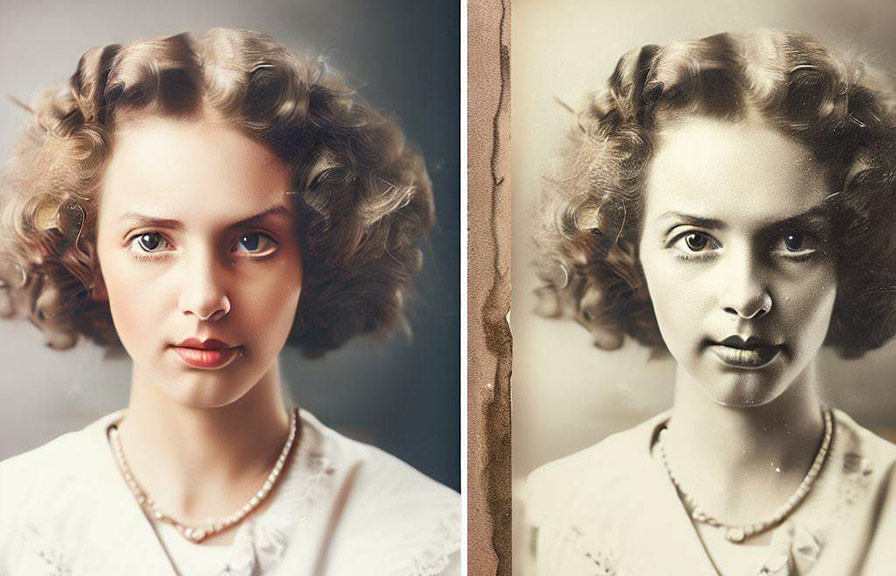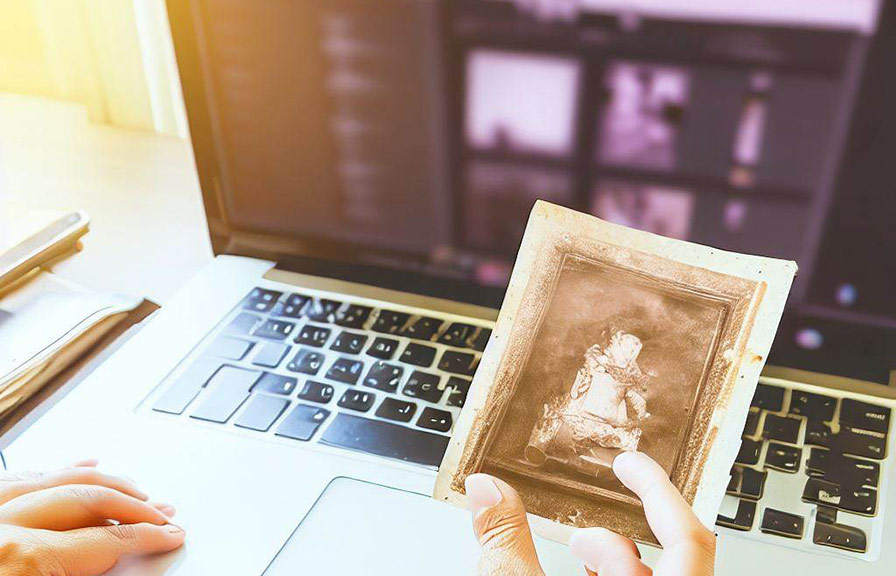In the digital age, it's easy to forget the treasured memories stored in physical photographs. over time, these photos might become damaged or faded, leaving us with only a shadow of the memories they once captured.
Luckily, photo restoration techniques can help breathe new life into these precious keepsakes. in this article, we'll explore the art of photo restoration and discuss how it can revive old photos, even those with significant damage.

What is photo restoration?
photo restoration is the process of repairing and enhancing old photographs, making them look as good as new or even better. this is achieved by using a combination of digital and traditional techniques, including image manipulation software like adobe photoshop.
By using these tools, professionals can remove scratches, tears, stains, and other imperfections, as well as adjust color balance and contrast to restore the image's original beauty.
The magic of old photo restoration
Old photo restoration is a specialized field within the broader world of photo restoration. this particular area focuses on images that are several decades old, often with extensive damage due to age, exposure to light, or poor storage conditions.
By leveraging powerful software tools and their expertise, professionals in this field can bring back to life even the most damaged photos, creating a priceless connection to our past.
Picture restoration techniques
There are many techniques used in picture restoration, each designed to address specific types of damage. some common methods include:
1. Scratch and dust removal: this involves digitally "painting" over scratches and dust spots, using colors and textures sampled from the surrounding area.
2. Color correction: restoring the original colors of a faded photo by adjusting hue, saturation, and brightness.
3. Tear repair: reconnecting torn sections of a photo and filling in missing areas with digital "paint."
4. Stain removal: eliminating stains, such as those caused by water or mold, by carefully blending and painting over the affected areas.
5. Sharpening: enhancing the clarity and detail of an image by adjusting the contrast between light and dark areas.
Can you restore damaged photos?
Yes, even severely damaged photos can often be restored to a surprising degree of quality. while the final result will depend on the extent of the damage and the skill of the photo restoration expert, many seemingly "lost" photos can be brought back to life with the right tools and
Techniques.
How to restore image files
In addition to physical photographs, digital images can also benefit from restoration techniques. whether it's a scanned photo or a digital image file that has become corrupted, the same principles of photo repair can be applied.
In many cases, this involves using photoshop or similar software to address issues like pixelation, noise, or color distortion.
The role of photoshop in photograph restoration
Adobe photoshop is an essential tool for many photo restoration professionals. its powerful features and versatile toolset make it ideally suited for tasks such as repairing old photos, removing imperfections, and adjusting colors. with the right skills and experience, a photoshop expert can achieve remarkable results in restoring old images.
Repair old photos: a step-by-step guide
While professional photo restoration services are often the best choice for severely damaged photos, it's possible to attempt some restoration techniques at home using photo editing software. here's a basic step-by-step guide to help you get started with repairing old photos:
1. Scan the photo: begin by scanning the photo at a high resolution (at least 600 dpi) to capture as much detail as possible.
2. Open the image in photoshop: import the scanned image into photoshop or a similar photo editing program.
3. Create a duplicate layer: duplicate the original layer to work non-destructively on the image.
4. Crop and rotate: if necessary, crop the image to remove any unwanted borders and rotate it to the correct orientation.
5. Remove dust and scratches: use the healing brush, spot healing brush, or clone stamp tool to remove dust, scratches, and other minor imperfections.
6. Repair major damage: for larger issues like tears or missing sections, use the patch tool or content-aware fill to repair the damage.
7. Adjust color and contrast: use adjustment layers to correct the color balance, brightness, and contrast of the image.
8. Sharpen the image: apply a sharpening filter to enhance the details and improve the overall appearance of the photo.
9. Save your work: save the restored image in a high-quality format, such as tiff or psd, to preserve the maximum amount of detail.
Conclusion
Photo restoration is an invaluable way to preserve and revive our cherished memories. whether it's an old family portrait, a historical document, or a once-in-a-lifetime snapshot, restoring damaged photos can create a lasting connection to our past.
With the right techniques and tools, even the most damaged photos can be brought back to life, allowing future generations to enjoy and appreciate these priceless images.
